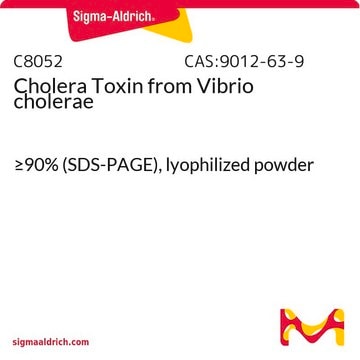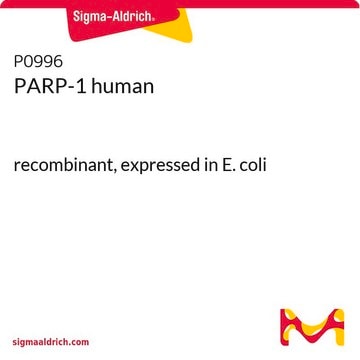A9106
ADP-ribosylcyclase
1000-3000 units/mg protein
Sinonimo/i:
Adenosine diphosphoribose cyclase from Aplysia californica
Scegli un formato
About This Item
Prodotti consigliati
Origine biologica
(Aplysia californica)
Saggio
≥80 μ protein/vial (BCA)
Stato
lyophilized powder
Attività specifica
1000-3000 units/mg protein
Composizione
Protein, ≤10%
Confezionamento
vial of ≥80 μg protein
Condizioni di stoccaggio
dry at room temperature
Concentrazione
≤10% (BCA method)
Compatibilità
suitable for enzyme test
applicazioni
genomic analysis
Temperatura di conservazione
−20°C
Cerchi prodotti simili? Visita Guida al confronto tra prodotti
Applicazioni
Azioni biochim/fisiol
Definizione di unità
Stato fisico
Avvertenze
Danger
Indicazioni di pericolo
Consigli di prudenza
Classi di pericolo
Resp. Sens. 1
Codice della classe di stoccaggio
11 - Combustible Solids
Classe di pericolosità dell'acqua (WGK)
WGK 1
Punto d’infiammabilità (°F)
Not applicable
Punto d’infiammabilità (°C)
Not applicable
Dispositivi di protezione individuale
Eyeshields, Gloves, type N95 (US)
Scegli una delle versioni più recenti:
Certificati d'analisi (COA)
Non trovi la versione di tuo interesse?
Se hai bisogno di una versione specifica, puoi cercare il certificato tramite il numero di lotto.
Possiedi già questo prodotto?
I documenti relativi ai prodotti acquistati recentemente sono disponibili nell’Archivio dei documenti.
I clienti hanno visto anche
Active Filters
Il team dei nostri ricercatori vanta grande esperienza in tutte le aree della ricerca quali Life Science, scienza dei materiali, sintesi chimica, cromatografia, discipline analitiche, ecc..
Contatta l'Assistenza Tecnica.













